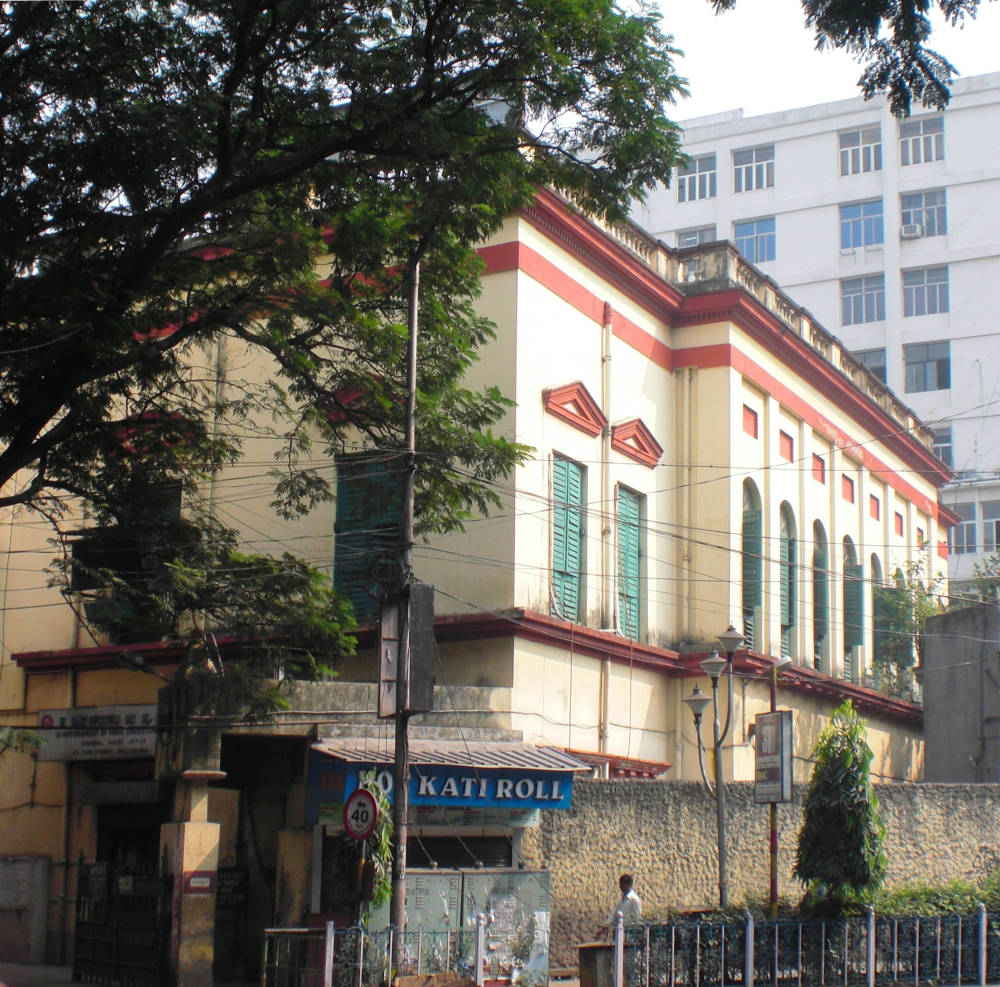
he Asiatic Society was our first port of call on a recent visit to Calcutta (Kolkata). I was led there by Sir Evan Cotton’s Calcutta, Old and New. Published in 1907 it has been the indispensable guide to Calcutta until the marvellous A Jaywalker’s guide to Calcutta by the eminent local journalist Soumitra Das. Cotton waxes lyrical about the Asiatic Society (921-24). “The Asiatic Society of Bengal, one of the oldest institutions of its kind, was founded by Sir William Jones, then the Chief Justice [actually, Puisne Judge] of Bengal on the 15th January 1784.” He quotes Jones’s aspirations. “The bounds of its investigations... will be the geographical limits of Asia and within these limits its enquiries will be extended to whatever is performed by man or produced by nature.” Cotton continues “The library contains above 15,000 volumes: among them more than 5,000 Sanskrit, Arabic, Persian and Hindustani manuscripts.... The bulk of the Arabic and Persian manuscripts formed part of Tipu Sultan’s library and had been transferred from Seringapatam to the College of Fort William”. By 2014 the book count has risen to 117,000 and 79,000 journals.


Left: The new (1965) buiding of the Asiatic Society.. Right: The old (1808) building of the Asiatic Society of Bengal now partly obscured off Park Street. [Click on these images for larger pictures.]
The Society’s own website added to our sense of anticipation “The Society however still has a museum of its own which possesses a rock edict of Asoka (c.250 BCE) and a significant collection of copper plate inscriptions, coins, sculptures, manuscripts and archival records. Some masterpieces like Joshua Reynolds’ Cupid asleep on a Cloud , Guido Cagnacci’s Cleopatra, Thomas Daniell’s A Ghat at Benares and Peter Paul Rubens’ Infant Christ are also in the possession of this museum.”
On arrival at Park Street we found that the refined old building of 1808 (which still exists at an angle to Park Street) has been replaced by a structure of 1960s concrete brutalism. Inside we began an almost Kafkaesque process of registration; filling out a visitors book, then a white form, handing over our passports, receiving a pink form , before finally being given a requisition ticket. It was curious, in a country famous for being “tech savvy”, to use an old fashioned card index for the first time in this millennium. But it is an excellent card index, lovingly cross-referenced over the decades by author, title and shelf-mark.
At various stages we caught glimpses of oil paintings on office walls and in the 3rd floor lift lobby; an original portrait of Sir William Jones, A Woman taken in adultery in the registration office, an old master in the Accounts Office and, against a wall, next to a pile of discarded computer equipment, Guido Cagnacci’s Cleopatra. I was left wondering how many of these works, donated by a British officer in 1834, were originals and, if so, how they were surviving the heat and dust of Calcutta, not to mention being on office walls. I also noted ruefully that the donation had been made "that they should be preserved in some public institution in Calcutta, where they might be properly attended to, and at all times open to public inspection." Everywhere there was dust and not a researcher to be seen. Everyone was delightful but nothing was possible. No, we could not see the paintings but we could buy a pack of postcards of them. However we were more fortunate in being able to see the 4th floor museum with a small but remarkable collection of ancient rock inscriptions, early coins and manuscripts. But as a museum it lacked imagination or care. We beat a hasty and disappointed retreat.
Later that day we purchased a copy of Soumitra Das’s book and looked for his verdict on the Asiatic Society. It was not pretty (Das, 69). “At the head of the Chowringhee side of Park Street is an institution, once pre-eminent for the great scholars, who were its members, and the superior quality of research done there, but now a stronghold of hangers-on who cling to it like limpets attracted by the hefty central funds it has been receiving ever since it was declared an institute of national importance.....The slab of vertical concrete that is the new building of the Asiatic Society eclipses the older building. Inside it is forlorn with huge chunks of plaster falling off and a wealth of paintings badly in need of restoration. Quality research is unheard of and no scholar of note is attached to it any longer.... Even its treasure trove of paintings, manuscripts, books and artefacts is under threat.”
Further reading
Cotton, Sir Evan. Calcutta, Old and New. A Historical and Descriptive Handbook to the City. Calcutta; W. Newman, 1907.
Das, Soumitra A Jaywalker’s Guide to Calcutta. Kolkata: Eminence Designs, 2007.
Last modified 1 December 2014